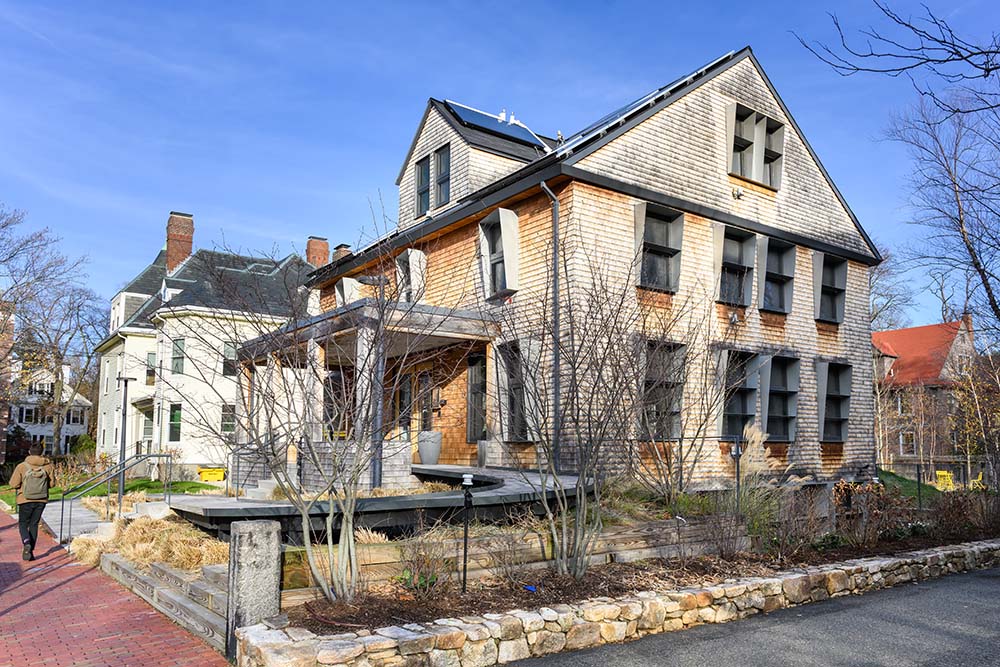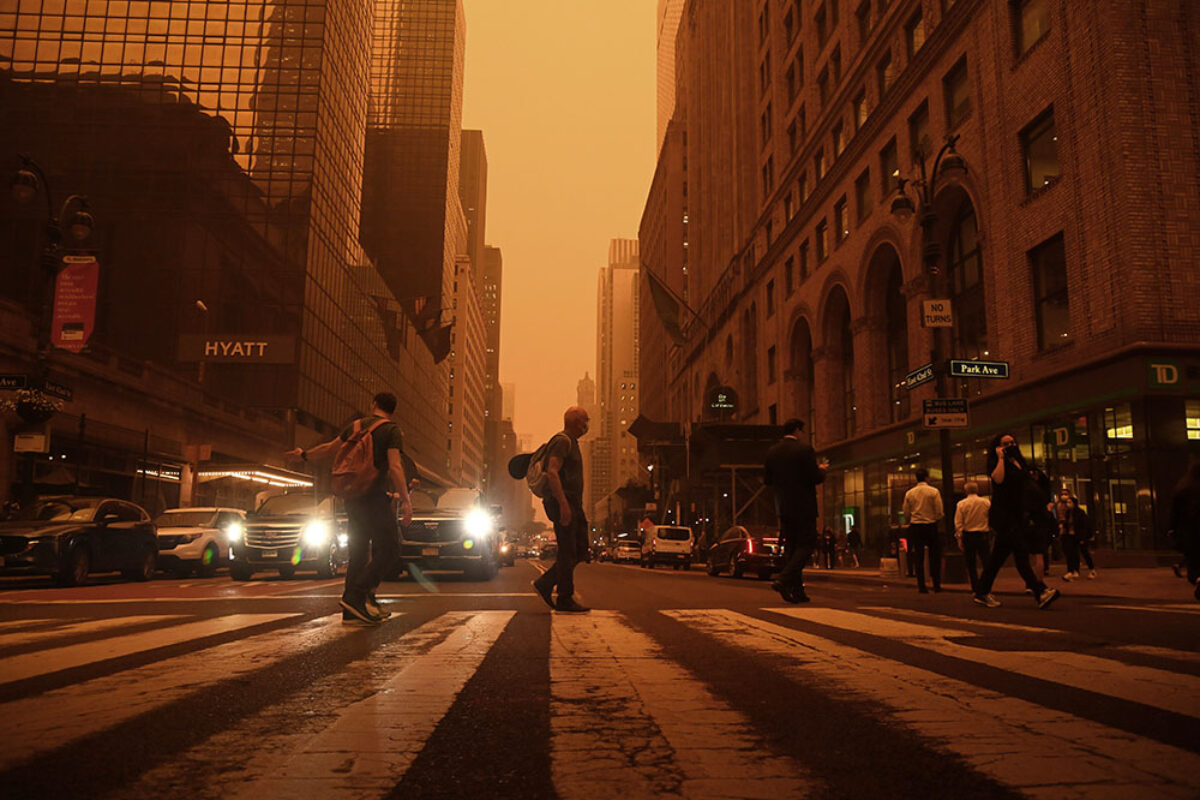Smoke from wildfires raging in Canada blanketed the Northeastern United States this month, turning the skies an eerie orange. Responding to record-setting levels of pollution, officials around the region declared health emergencies. Advice to close windows and run air filters helped mitigate the acute effects of the short-term crisis, but the event also drew attention to how climate change is intensifying chronic air pollution around the world.
Ensuring the safety and quality of air is now an urgent issue for designers. Holly Samuelson, Associate Professor in Architecture at the Harvard Graduate School of Design (GSD), is changing how the design fields think about the complexities of air quality. Protecting inhabitants from outside pollutants is only one part of the challenge. Buildings also need to have proper ventilation and provide efficient heating and cooling systems that could lower the emissions driving climate change in the first place. Samuelson shared her insights with William Smith, editorial director at the GSD.
William Smith: With this wildfire smoke offering a possible glimpse into a future of more frequent disasters stemming from climate change, what are some possible solutions the design fields could offer?
Holly Samuelson: With good design, buildings can be more airtight when desired to keep out smoke and other pollutants. As a bonus, reducing unwanted air leakage also increases thermal comfort during the winter and tends to be one of the most effective energy-saving measures in buildings. Improved airtightness requires good window selection and architectural detailing, especially at corners and joints between materials. There’s room for advancement here. It also requires a well-constructed building, so architects often specify air leakage limitations to be verified with on-site testing.
Of course, a more airtight building then requires better protection against indoor sources of pollution (If you give a mouse a cookie . . .) So, during periods of acceptable outdoor air quality, which is most of the time in many places, this means bringing in outdoor air to flush indoor pollutants, carbon dioxide, and airborne pathogens, a topic that needs little introduction since the onset of COVID. Design solutions are definitely needed here. How can we achieve the health benefits of more fresh air without all the carbon penalties of heating, cooling, and dehumidifying this air, moving it around, and constructing these systems in the first place? Cue the genius designers!
So what strategies have been used in buildings?
In Harvard’s Center for Green Building and City’s HouseZero, a naturally ventilated lab building, windows open automatically in response to measured air quality conditions. In buildings like the Chesapeake Bay Foundation Philip Merrill Environmental Center or the Artist for Humanity Epicenter, simple lights alert occupants when it’s a good time to open windows. Architects then design for good buoyancy or cross ventilation when they want to move abundant fresh air naturally.

Design teams also use energy recovery ventilation to allow heat and humidity exchange between incoming and outgoing air and to promote ventilation at times when window opening may be unpopular, like in winter. This energy recovery can be via heat exchangers, enthalpy wheels, or with small, ductless, through-the-wall units. Some design researchers are also working on passive versions of these systems, and others are advancing ultra-efficient radiant systems that focus on heating or cooling people rather than air in the first place.
Filtration is also an important topic that gains increased attention during wildfires. For buildings without mechanical ventilation, occupants can use standalone air filtration. Since pressure moves air through filters, and the higher the filtration efficiency, like MERV (minimum efficiency reporting value) 13 or HEPA (high efficiency particulate air) filters, the more air pressure that’s needed, and that takes fan power. Therefore, in mechanically ventilated buildings, designers can choose efficient equipment and remove other pressure losses in the system to avoid adding even more fan loads, for example by allowing for straight air paths with minimal surface area for friction. (Think boba tea straw, rather than curly straw for a thick milkshake.) This strategy takes space planning early in the design.
What other considerations should architects account for when creating efficient, ventilated buildings that also protect against pollution?
If we expect building occupants to close windows in unhealthy outdoor air conditions and to open windows in unhealthy indoor air conditions (a frequent problem in unventilated buildings), then issues of thermal comfort and safety matter, especially in residential buildings. This is especially important for occupants who are physiologically more sensitive to indoor overheating and poor air quality, such as young children and older adults. Architectural strategies like good sun shading, including trees, envelope insulation, and thermal storage, can reduce energy use while significantly extending the length of time that a building can remain comfortable in extreme weather conditions and power outages, an increasing concern with climate change.
